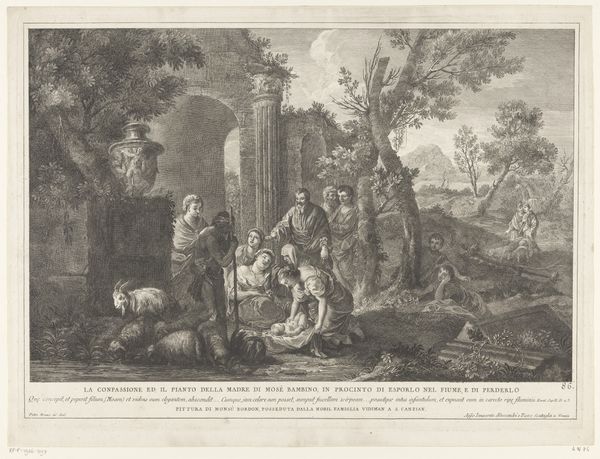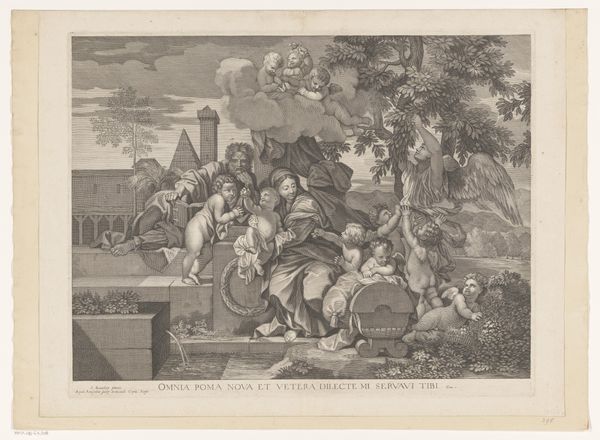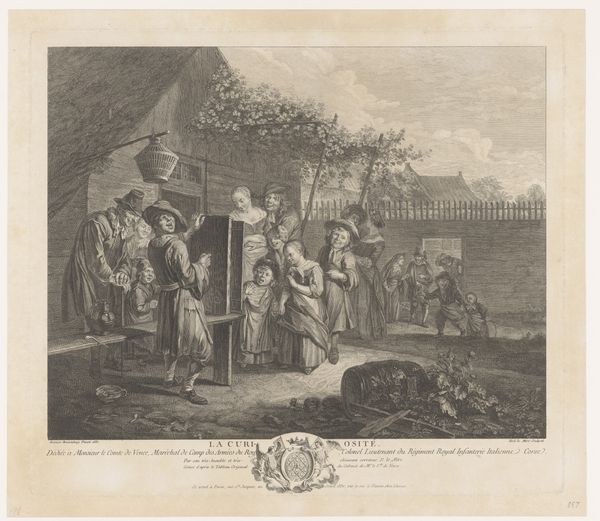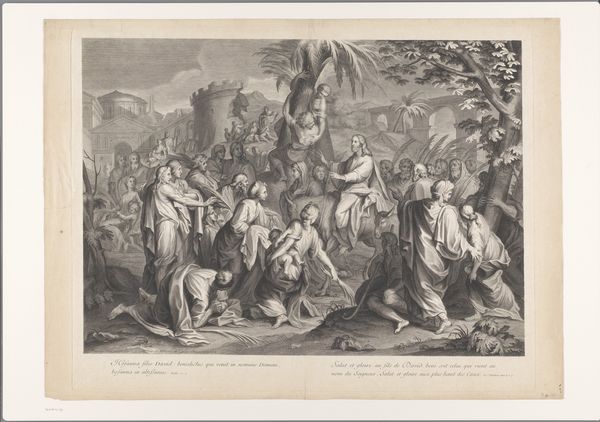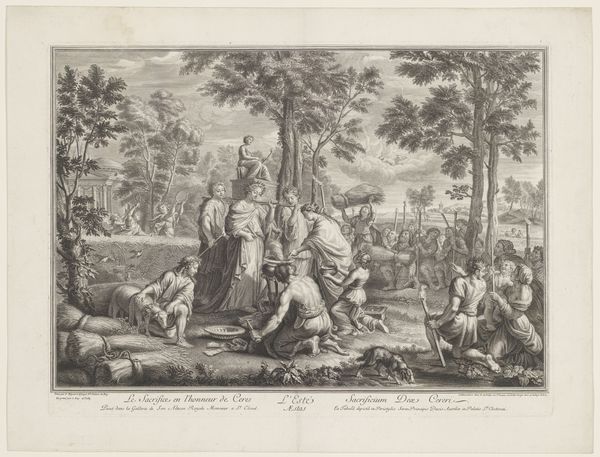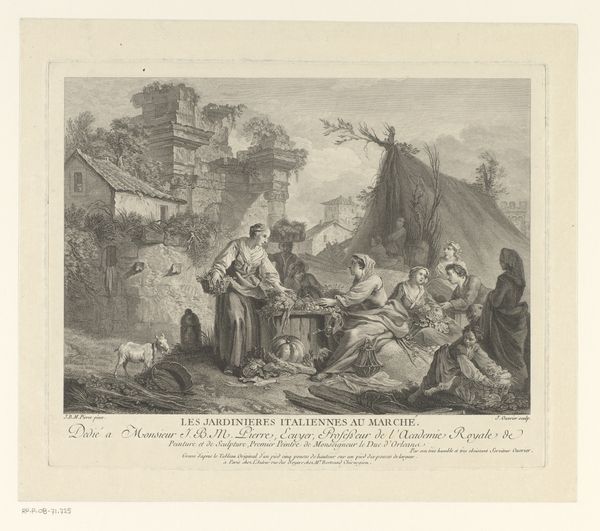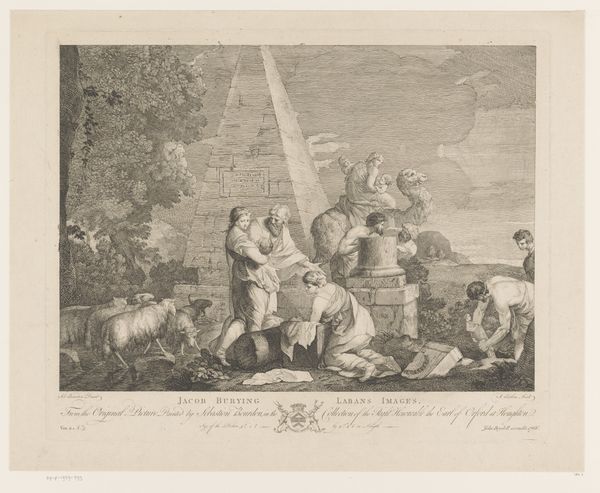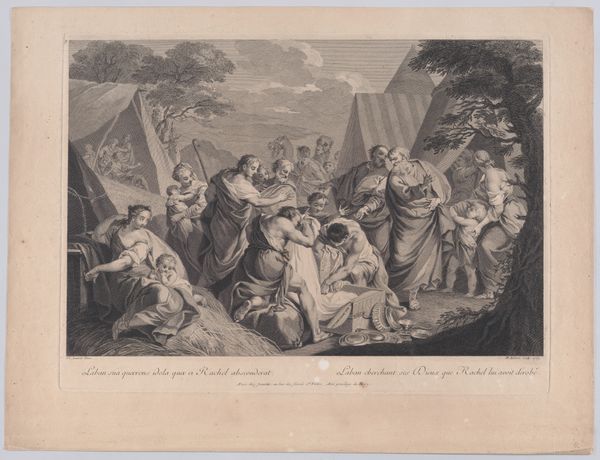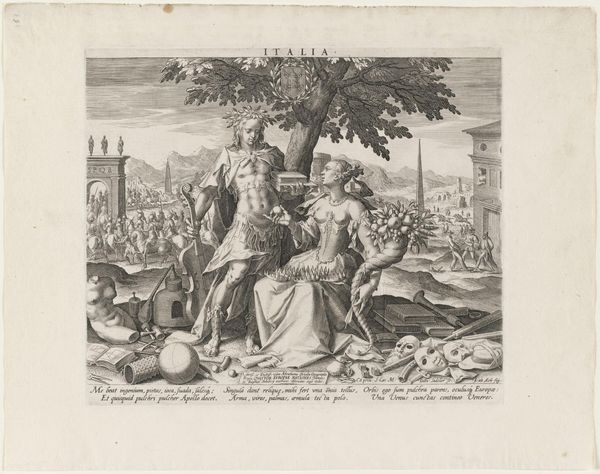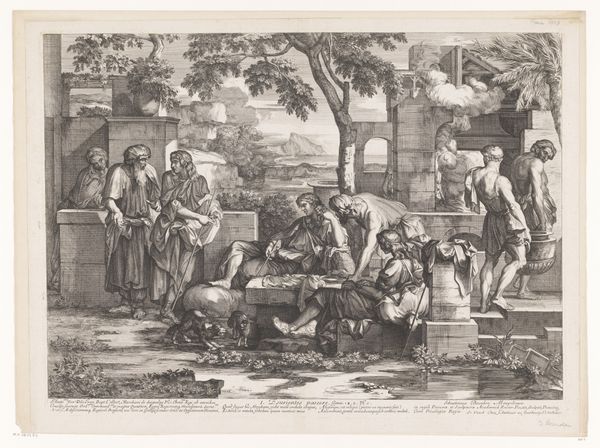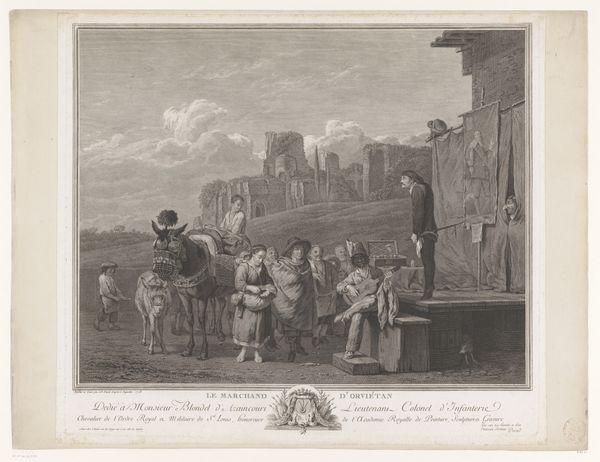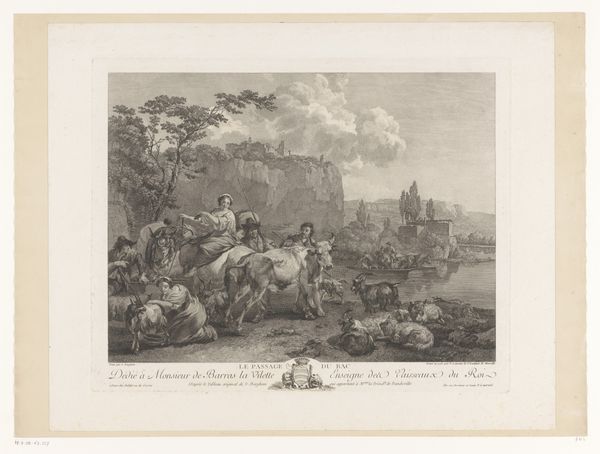
Heilige Familie met Johannes de Doper, een lam, andere kinderen en putti 1669 - 1693
0:00
0:00
print, engraving
#
baroque
# print
#
landscape
#
figuration
#
history-painting
#
engraving
Dimensions: height 448 mm, width 545 mm
Copyright: Rijks Museum: Open Domain
Curator: This engraving, dating back to sometime between 1669 and 1693, is entitled "Heilige Familie met Johannes de Doper, een lam, andere kinderen en putti," translating to "Holy Family with John the Baptist, a Lamb, Other Children, and Putti," and it's attributed to Pieter van der Banck. It depicts a serene domestic scene within a classical landscape. What strikes you most about it? Editor: There’s a quiet tenderness, an almost dreamlike quality to the composition. It’s idyllic, a bit… staged. Look at all the little cherubs! Are they supposed to evoke a sense of carefree innocence, or something else entirely? Curator: I think that tension between idealized harmony and potential underlying anxieties is key to understanding the historical context. Baroque art, while opulent, was also a period wrestling with shifting religious power and societal upheavals. The inclusion of John the Baptist, the lamb, all those children… it’s a visual representation of devotion, a yearning for an age of faith and innocence perhaps already lost. Editor: True, the positioning of Joseph seems a bit… secondary, though. Off to the side, almost overshadowed. It plays into existing power dynamics doesn't it, which positions men in relation to women. His role feels more utilitarian than spiritual. Is it possible this placement, consciously or unconsciously, reflected shifting roles of men and women within the family structure? Curator: It’s a very relevant interpretation, positioning him that way invites viewers to analyze not only the subject and gender but, class structure in relation to gender identity. The family dynamic plays such a large role here as a way of illustrating the intersection of gender roles that may or may not reinforce patriarchy, and the power dynamic in this composition reflects existing social inequalities. Editor: Looking closer at the children gathered around the lamb – there's a vulnerability that’s hard to ignore. Knowing that childhood mortality rates were incredibly high during this period adds a layer of poignancy. The lamb, often associated with sacrifice, amplifies a haunting question that underscores the piece, asking: Is there a true security of love even within holy familial love and community? Curator: Absolutely. It's a bittersweet meditation. It brings to mind a concept from a philosopher I am interested in: we have a right to ethics that protects vulnerability because all human beings suffer from existential and contingent vulnerability that merits our serious consideration and response. Editor: Ultimately, Pieter van der Banck provides us not with answers, but perhaps questions. Curator: And, indeed, with a visual tapestry richly woven with love, and longing.
Comments
No comments
Be the first to comment and join the conversation on the ultimate creative platform.
